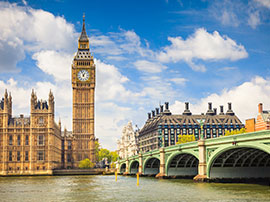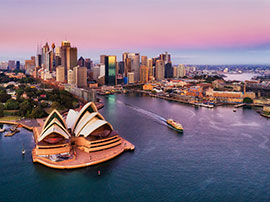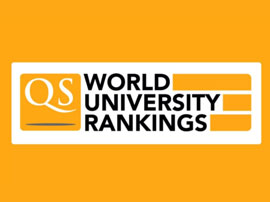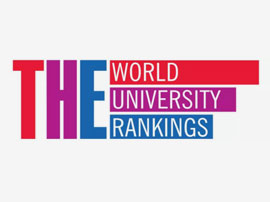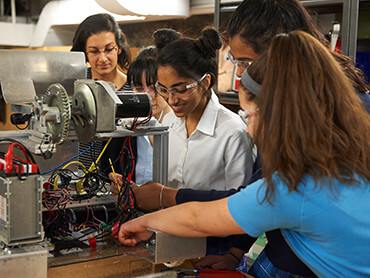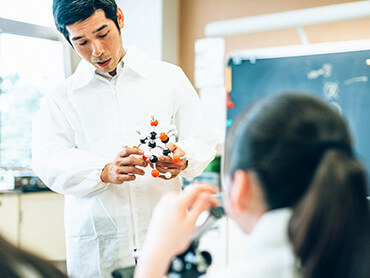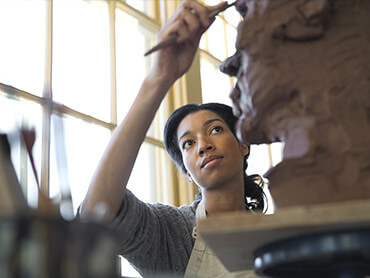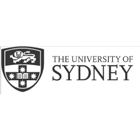
悉尼大学



悉尼大学基本信息
- 中文名:悉尼大学
- 英文名:The University of Sydney
- 位置: DARLINGTON
- 简称: The University of Sydney
- 建校时间: 1852-05-26
- 又名: University of Sydney|USYD|Unisydney|悉大|Sydney U|The University of Sydney|悉尼大学|悉尼大学The University of Sydney
悉尼大学校训
Sidere mens eadem mutate; Translated into English: Though the stars may change, the mind remains the same
- 院校总览
- 最新动态
- 教育质量评级
- 院系结构
- 入学条件
- 毕业生就业前景
位于澳大利亚首都的悉尼大学是举世闻名的机构,一直名列世界前20名大学之列(2024年QS世界大学排名)。在2022年QS毕业生就业能力排名中,悉尼大学的毕业生也位居澳大利亚第一和世界第四。来自世界各地的学生进行本科和研究生水平的学习。
学生可以在澳大利亚最广泛的课程和学科中选择。该大学提供超过400个学习领域供学生选择,大学5门学科位居世界前十名,另外还有28门学科位居世界前50名(2022年QS世界大学学科排名)。通过实习和工作经验以及通过大学海外项目进行国际交换(包含在学位内的可选项目),从而增加了学生的就业机会。
学生将在支持和启发的环境中学习和发展,大学会提供给学生大量的服务,这包括学术和专业支持,残疾服务,保密咨询服务,健康服务还有财务援助办公室提供服务。学生还可以参加由悉尼大学学生会(USU)运营的250多个校园俱乐部和社团,从体育运动到文化团体应有尽有。
校园内有许多可供学生使用的设施,其中包括带奥林匹克规格温水游泳池的健身室和攀岩中心。此外,还有美术馆、博物馆、咖啡馆、餐厅和酒吧供学生休闲。学生还可以使用南半球最大的学术图书馆。
悉尼是世界上最优秀的城市,根据《经济学人》2021年安全城市指数显示,悉尼被评为第四大最安全的居住地,当地的学生体验得以丰富和提升。

网络安全硕士
网络安全是指保护系统、网络和程序免受数字攻击的行为。这类网络攻击通常有以下目的:访问、更改或破坏敏感信息;勒索用户金钱;或者中断正常的业务流程。
悉尼大学的网络安全硕士为学生提供基础网络安全概念和行业未来趋势的丰富知识。这门课程教授检测和评估网络安全威胁所需的分析和技术技能、隐私和安全法规相关基本知识,以及向专业和非专业受众传达调查结果的能力。
随着该学科对专业人员的需求日益增加,如今正是寻求在网络安全领域就职的最佳时机。有关课程结构、费用和入学要求的更多信息,请访问课程网站 。
数据科学硕士(线上)
数据科学硕士学位课程使毕业生能够成为多个行业的数据科学家。
该学位课程探索最新数据挖掘、机器学习和数据可视化的最新发展趋势,以满足日益增长的行业需求。可帮助学生发展分析和技术技能,以利用数据科学指导战略决策。学生将学习数据科学、机器学习、数据挖掘、视觉分析和计算统计方法原理,进一步扩充在人工智能或商业数据科学等领域的知识。
未来从业方向包括成为受雇数据科学家,在现有专业领域构建智能数据驱动系统(例如采矿分析师),或者通过数据管理、分析和建模方面的培训改善科学研究。
学生将受益于创新性多学科课程结构,受教于人工智能和机器学习领域的国际专家学习,该课程全程在线教授,十分灵活。了解更多信息。

悉尼大学提供灵活的本科学位结构,使学生能够找到最适合自己的学习途径。学生可以选择主修和第一学位以外的辅修,得到国际经验,从事现实世界的项目,通过在线研讨会促进个人发展或访问高级课程。
悉尼大学拥有澳大利亚最大的学生流动计划。它与位于40多个国家/地区的250多所大学合作,使学生既可以将学习和旅行结合起来,也可以为国际职业生涯做好准备。
悉尼大学是世界上顶尖的研究型大学之一。无论学生是作为本科生还是研究生开始他们的学习旅程,他们都将接触他们所选领域的领导者,这些领导者跨越各个学科工作以应对重大的社会挑战。

文理学院
该学院提供40多个本科科系的专业知识。这包括经济学、语言和文化、哲学和历史、文学、艺术以及媒体和视觉艺术。
悉尼大学商学院
悉尼大学商学院提供跨学科的教学和研究,包括商业分析、会计、商业信息系统、金融、商业法和国际商业。
工程学院
该学院在人工智能领域的突破性工作促进了人脸识别和无人驾驶汽车以及其他多视图学习应用程序的发展。
医学与健康科学学院
该学院汇集了医学、牙科、医学、药学、公共卫生、护理和助产学以及健康科学以促进采用多学科方法来解决现代医疗保健问题。
科学学院
该学院因其在世界排名中的一流表现、卓越的研究以及屡获殊荣的项目和研究人员而享誉国际。
悉尼建筑设计与规划学院
悉尼建筑、设计和规划学院被QS评定为建筑/建筑环境领域全球前25所学院。
悉尼音乐学院
悉尼音乐学院为学生提供全面的音乐教育,提供在新音乐世纪蓬勃发展所必需的知识和技能。
悉尼法学院
被誉为全球最佳教学与研究法学院之一(2022年QS世界大学学科排名),该校的学生跟随国际公认的法律教育家以及备受推崇的专业从业者学习。

如果英语不是学生的母语,则他们将需要提供其英语能力证明,然后才能在大学学习。
学生可以通过向大学提供证明来表明他们已经完成了特定的中学或大学证书。学生可以参加英语语言能力测试或通过在悉尼大学英语教学中心(CET)完成适当的英语课程来证明自己的英语能力。
悉尼大学接受的英语语言能力测试包括:
- 国际英语语言测试系统(IELTS)- 学术模块
- 英语作为外语考试:纸质考试(TOEFL PB)
- 英语作为外语考试:基于互联网(TOEFL iBT)
- 培生英语考试(PTE)- 学术
- 剑桥英语:熟练(CPE)和剑桥英语分数量表剑桥英语:高级(CAE)

国际学生或毕业生可以在澳大利亚、其他国家或回到母国建立自己的职业生涯。悉尼大学帮助学生做好职业准备并为国际学生量身定制各种服务。
该大学提供的职业支持包括建议、活动和项目,这些项目旨在帮助国际学生扩大他们的网络,了解当地的就业市场以及利用他们在澳大利亚的时间发展自己的职业。
国际学生活动
该大学以各种方式为国际学生提供帮助,包括就业计划、职业发展计划以及建立与校友和行业的联系。
校友和给予
该大学为学生提供了许多联系和扩展人脉的机会。它在全球拥有超过35万名校友以及超过60000名捐助者。他们的全球影响包括从指导学生到对改变人生研究的支持。

每年费用
生活费用
A$37,043
平均课程费用
硕士
本科


Sydney International Student Award (India)
资助类型
Fee waiver/discount

The Humanitarian High Achiever Scholarship
资助类型
Fee waiver/discount

Vice-Chancellor's International Scholarships Scheme
资助类型
Fee waiver/discount
申请截止日期
01 November 2022

